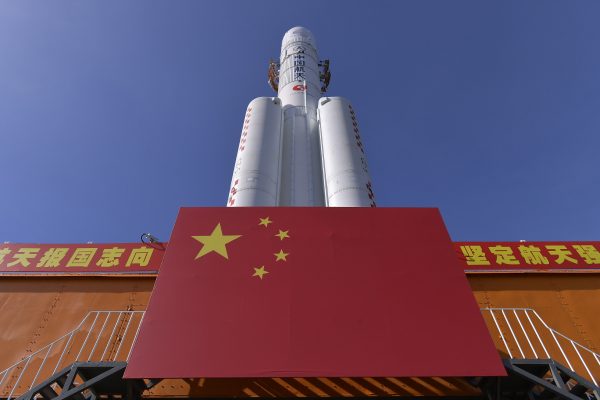The China’s space program has a long history, dating back to the 1950s, but it started slow and secretive. Unlike the highly publicized early years of the Soviet and American space programs, China carried out its first satellite launches without announcing them to the public. It launched its first satellite, the Dong Fang Hong I, in 1970. And by 2003, China became the third country to independently send humans into space with its Shenzhou 5 mission.
China’s Space Industry: Latest Achievements and Contributions to the Global Space Sector
China has emerged as a major player in the global space industry in recent years, making significant strides in space exploration, satellite technology, and the development of launch vehicles. The country’s rapid progress is rooted in its ambitious long-term goals and the support of the Chinese government. This article highlights China’s latest achievements and contributions to the global space sector.
Lunar Exploration: Chang’E Missions
China’s Lunar Exploration Program began in 2004, with a series of robotic missions named after the legendary Chinese moon goddess, Chang’E. Among the latest achievements, the Chang’E 5 mission in 2020 successfully collected lunar samples and returned them to Earth for the first time since the Soviet Union’s Luna 24 mission in 1976. This marked a significant milestone for China, demonstrating its advanced capabilities in lunar exploration.
Mars Exploration: Tianwen-1
China’s first Mars mission, Tianwen-1, was launched in July 2020 and successfully entered Mars’ orbit in February 2021. The mission comprises an orbiter, a lander, and a rover named Zhurong. It successfully landed on Mars in May 2021, making China the third country to land a rover on the Red Planet. The rover has been conducting scientific experiments, studying Mars’ geology, and atmosphere, and searching for potential signs of water.
China Space Station: Tiangong Space Station
The Tiangong space station is the most ambitious space project of China Manned Space Agency (CMSA). It is a permanently crewed space station constructed by CMSA in low Earth orbit between 340 and 450 km above the surface. It is China’s first long-term space station, part of the Tiangong program and the core of the “Third Step” of the China Manned Space Program.In April 2021, the core module for this permanent station was launched into orbit. Shenzhou 12 carried three astronauts to the new space station core module in June 2021, beginning a series of crewed missions to construct the station. The next module launched in July 2022. Later that year on the 31st of October the third orbit was launched into orbit. By November the construction of the space station was completed. On the 29th of November, the final crew members were launched into the space station and a week later the station became officially functional.Tiangong’s goal and mission is to advance and gain experience in spacecraft rendezvous technology, permanent human operations in orbit, long-term autonomous spaceflight of the space station, regenerative life support technology, and autonomous cargo and fuel supply technology, according to CMSA. There will be 23 pressurized, insulated experiment racks aboard the space station. On the Wentian (‘Quest for the Heavens’) and Mengtian (‘Dreaming of the Heavens’) laboratory cabin modules of Tiangong Space Station, respectively, there will be 22 and 30 platforms for open experiments. The CMSA has given its preliminary approval to over 1,000 experiments that are planned for the space station.
Satellite Navigation: BeiDou Navigation Satellite System
The BeiDou Navigation Satellite System (BDS) is China’s global satellite navigation system, designed to rival the United States GPS, Russia’s GLONASS, and Europe’s Galileo systems. In June 2020, China completed the deployment of the BDS-3 constellation, which provides global coverage. The system has facilitated improved positioning, navigation, and timing services for various applications, including transportation, agriculture, and disaster relief.
China’s Commercial Space Industry
China’s commercial space sector has also witnessed significant growth, with several private companies entering the market. Companies like iSpace, Landspace, and Galactic Energy are developing launch vehicles and offering satellite launch services, fostering a competitive environment that drives innovation and reduces costs. The emergence of these private companies has contributed to the global space ecosystem and expanded the availability of space-related services.
China’s Space Program: International Collaboration and Contributions
China has actively participated in international cooperation and assisted other countries in the space domain. For instance, China has launched satellites for countries like Pakistan, Venezuela, and Bolivia, helping them improve their telecommunication and remote sensing capabilities. Furthermore, China has expressed its willingness to collaborate with other nations in lunar and Mars exploration, sharing data and expertise for mutual benefit.Though the US still leads in areas like interplanetary exploration, space-based research, and space technology, China is making quick progress, especially in crewed spaceflight and space stations. It is more advanced than the space programs of other developing nations. China landed on the moon and has a permanent space station, while India has only recently achieved its first crewed mission. Its space program is largely developed using indigenous technology and it does not rely on cooperation with Russia, Europe, or the US like some other countries do. This independence is a point of national pride for its citizens. However, China’s space initiatives are more militarily linked than other space programs!China’s space program is directed by the People’s Liberation Army, and there are suspicions about its development of counter-space capabilities like ASAT weapons. It’s space program is run as a state-secret with absolutely no transparency. And the collaboration and cooperation with international partners is kept limited. Other programs like the US and European programs emphasize openness and global cooperation – a feature non existent in China’s Space program.China has a space program that leads developing countries but still lags behind the most advanced space powers. However, the industry has made remarkable progress achieving numerous milestones and contributing to the global space sector’s growth. From lunar and Mars exploration to satellite navigation and the development of its space station, China’s achievements showcase its determination to become a leading space power.

